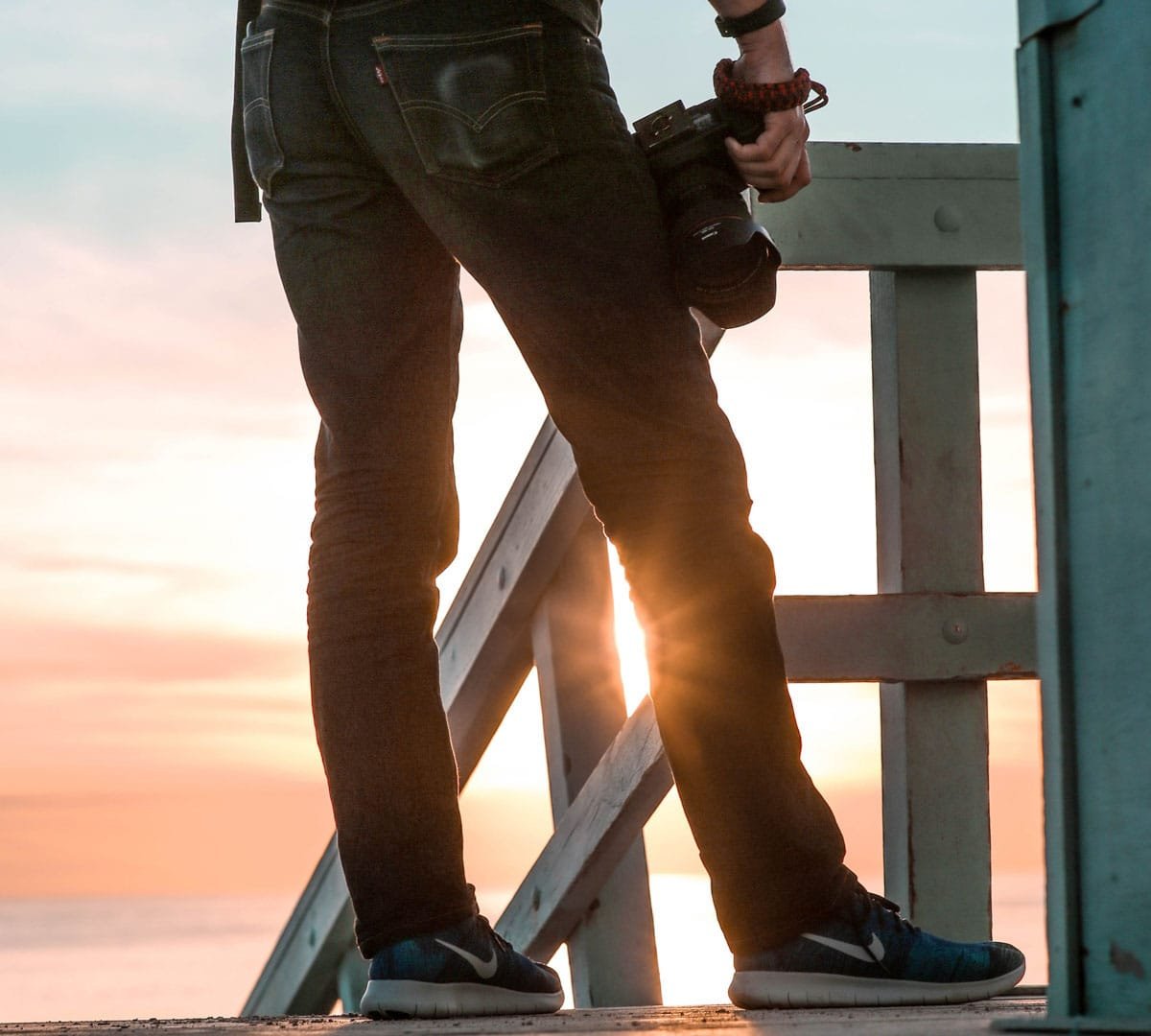Understanding Branding in Photography: A Comprehensive Guide
The Photography Brand Article Series:
(Currently Reading) "Understanding Branding in Photography: A Comprehensive Guide": Understand what exactly branding is and what that means for your photography business. This guide covers branding components, expert insights, and practical strategies for photographers.
"Creating Your Photography Brand: A Step-by-Step Action Guide": A comprehensive guide to building a robust brand for your photography business. This article lays out actionable steps and reflections, covering everything from brand foundations to strategies for visibility.
"Leveraging Your Brand in Photography: From Business Cards to Online Presence": Learn how to harness your brand for your photography business. From logo design to business cards to online presence, this guide offers actionable insights for photographers.
Introduction
In the vast and captivating realm of photography, where images speak louder than words, the idea of branding often takes a back seat. However, for those photographers seeking to make a lasting impression, establish a distinct identity, and carve out a niche for themselves in this fiercely competitive space, the power of branding becomes undeniable.
The Role of Branding in Photography
Photography, by its very essence, captures moments, emotions, and stories. However, when one delves into the business side of photography, it's not just about capturing breathtaking images; it's also about how you present yourself and your work to the world. That's where branding comes into play. Think of branding as the lens through which the world sees you. It's more than just a logo or a color scheme; it's the entirety of experiences, emotions, and expectations that your audience associates with you and your work.
This comprehensive guide aims to illuminate the multifaceted world of branding within photography. Whether you're a budding photographer just starting your journey, a seasoned professional looking to revamp your brand, or someone in between, this guide is tailored to provide you with insights, strategies, and actionable steps to elevate your branding game.
Branding serves as a beacon, guiding potential clients towards you amidst the sea of photographers. A strong brand not only differentiates you from the masses but also fosters trust, builds loyalty, and can significantly influence purchasing decisions.
Note: Branding is more than a one-time exercise. It's an evolving journey that requires introspection, creativity, and a keen understanding of your audience. As you proceed through this guide, we encourage you to reflect on your brand's current state, visualize where you want it to be, and harness the insights and strategies presented here to bridge that gap.
You Already Have a Brand
Whether you've spent countless hours perfecting your brand or haven't given it a second thought, here's an undeniable truth: you already have a brand. Every business, regardless of its size or tenure, inherently possesses a brand. It's an amalgamation of the experiences clients have with your services, the emotions your photos evoke, and the perceptions formed from every interaction.
If you're intentionally crafting your brand, it becomes a powerful tool in your arsenal, enabling you to create a consistent image, set expectations, and build trust with your clients. This brand, cultivated with care and intention, speaks volumes even before you say a word or click a photograph.
On the flip side, if you're not proactively shaping your brand, it doesn't mean it's non-existent. Instead, it's being passively molded by external factors – client reviews, word of mouth, or even a single unplanned incident. This unintentional branding might not always align with your vision, and more often than not, it's left to the varied interpretations and reactions of clients.
The crux? Branding isn't optional. It's always there, subtly influencing client decisions, impacting business growth, and reflecting your business ethos. The choice photographers have is not between having a brand or not but between intentionally steering their brand in the right direction or leaving it to chance.
As we navigate through this guide, remember that every step you take, every photo you capture, and every client interaction is an opportunity to reinforce or redefine your brand. Embrace it, shape it, and let it be the cornerstone of your photography journey.
The Essence of a Brand
In the dynamic landscape of photography, where distinctiveness is the key to standing out, branding isn’t just a business tool; it's a signal. A signal that conveys who you are, what you stand for, and the unique value you bring to the table. It’s about more than just aesthetics or logos; it’s about creating an identity that resonates. By honing your brand strategy and crafting a deliberate brand identity, you are essentially amplifying your voice so that your Ideal Customer Profile (ICP) can hear you amid the cacophony. This intentional signaling ensures clients can find a photographer whose values and objectives align with theirs.
For photographers, a robust brand strategy makes them instantly recognizable, setting them apart in a saturated market. For clients, it offers clarity—presenting a clear picture of the photographer's ethos, style, and approach. In essence, the right branding bridges the gap between photographers and their ideal clientele, fostering connections based on mutual understanding and shared values.
What is a Brand?
A brand is not just a logo or a catchy tagline; it's a storyteller. Imagine your brand as a novel, where each chapter represents different aspects of your business — your style, your ethics, your vision, and your aspirations. A well-defined brand will allow your audience to read this story effortlessly, understanding and resonating with every page.
Your brand is the story your business tells, the reputation it carries, and the legacy it leaves behind.
This sentiment rings especially true in the world of photography. Take, for instance, Annie Leibovitz, a celebrated photographer. Her brand is synonymous with her evocative portraits that capture the essence of her subjects. We don’t just recognize her by her logo but by the consistent style and emotion her photographs exude.
Real-world Examples from Established Photography Brands
Consider the iconic brand of Steve McCurry, the man behind the world-renowned "Afghan Girl" photograph. His brand is not just defined by that one image but by his consistent portrayal of humanity in all its rawness and authenticity across decades. Another example is Brandon Woelfel, whose brand is characterized by his dreamy, neon-tinted portraits. His consistent style, combined with his engagement strategies on platforms like Instagram, has made his brand one of the most recognizable in contemporary portrait photography.
This doesn't mean that you can't explore, try new things, and have multiple styles as a photographer. But it does show the power of cohesion. A brand is similarly powered by consistency and cohesion, not just visually, but in how you speak (your content), how you interact (your client experience), and what you stand for.
Think about Nike, Apple, and Vogue; they have multiple products, styles, subjects, and shows, but their core messaging, values, and experience are the same across the board. Even when they create derivative logos or use different colors, they are still recognizable tributes to their core components. We can also see from them a different product doesn't need a different logo. You can photograph multiple subjects and styles, but it is often advantageous to keep your marketing material, your visual identity, and even your experience consistent.
The Emotional Connection of a Brand
Brands, especially in photography, have the power to evoke emotions. Think about it. When you see a mesmerizing landscape shot that transports you to serene mountains or a portrait that captures raw emotion, you're not just admiring the technique; you're connecting with the brand behind the image. The emotion you feel becomes associated with that photographer's brand.
Your brand carries weight; it's the emotional effect left after an audience interacts with your work. It's the warmth, the nostalgia, the awe, or the inspiration they feel. This emotional connection is what turns casual viewers into loyal clients and followers. It's what makes them choose you over hundreds of other photographers.
A couple will choose the wedding photographer who has work that makes them feel the way they want to feel. A family will choose a photographer who has work that makes them see what they want to see. Your brand is about continuing your touch and impression beyond your photos and onto every touchpoint of your business.
In the realm of photography, where emotions are the currency, understanding and crafting your brand becomes the linchpin of your success.
Demystifying Branding
Branding, a term often tossed around in business corridors, workshops, and seminars, is more than just a buzzword. It's a multifaceted concept that can often be misinterpreted or oversimplified. Let's dive deep into the world of branding, particularly in the context of photography, to truly understand its layers, nuances, and significance.
What is Branding and How Does it Differ from a Brand?
While the words "brand" and "branding" are often used interchangeably, they hold distinct meanings. A 'brand' is the perception people have about a company or individual, the emotional and psychological relationship they have with a business. On the other hand, 'branding' is the active process of shaping that perception.
In the context of photography, think of your brand as the lasting image or feeling people remember when they think of your work. Branding, then, is the series of actions you take to create that image or evoke that feeling. It's the colors you consistently use, the style of your marketing materials, the way you interact with clients, and even the typeface on your website.
Branding is the art of differentiation, identity, and self-presentation. In today's saturated photography market, branding is what helps photographers stand out, resonate with their target audience, and build loyalty.
Many believe branding is just about the visuals - the logo, website design, or business cards. While these are crucial elements, branding encompasses so much more. It's about creating a holistic experience for clients.
How Does it Differ from Marketing?
Branding and marketing, while closely related, serve different purposes. Branding is about building and maintaining a reputation, creating an identity, and ensuring consistency across all touchpoints. It's the foundation upon which you build your business. Marketing, on the other hand, is about actively promoting and selling products or services. It's the strategy you employ to get your work in front of potential clients.
In simpler terms, if branding is the story you tell about your photography business, marketing is when and where you tell that story.
Historical Context: The Evolution of Branding
Branding isn't a modern invention. It has been around since ancient times when artisans would mark their creations with a unique symbol or signature. In the realm of photography, branding evolved dramatically with the advent of digital technology. Photographers transitioned from being just behind-the-lens artists to becoming brands, influencers, and even educators.
The digital age, with its social media platforms and online portfolios, has amplified the importance of branding for photographers. It's no longer just about showcasing your best work but about creating a cohesive and memorable online presence that aligns with your brand values and appeals to your target audience.
The Role of Branding in Shaping Perceptions
Perception is reality. In the world of photography, the perception clients have of you can dictate your success. Branding plays a pivotal role in shaping these perceptions. It ensures that every interaction a client has with your business, be it through your website, social media, or even direct communication, leaves a positive and consistent impression.
A well-crafted brand can instill trust, build loyalty, and even command premium pricing. It can make the difference between a one-time client and a lifelong advocate for your work.
Branding in photography is about combining authenticity and strategy. It's about presenting your genuine self while strategically positioning yourself in a market filled with talented artists. As we delve deeper into the core components of branding in the subsequent sections, remember that branding is an ongoing journey, one that requires introspection, adaptation, and consistency.
As photographers embark on their branding journey, understanding its nuances becomes imperative. The subsequent sections aim to provide a roadmap, illuminating the various components and strategies to craft a brand that resonates and endures.
Understanding the Core Components of Branding in Photography
The strength of a photography brand doesn't just rest upon the quality of photos but also on the holistic presentation and perception of the photographer or the studio. As we venture into the core components of branding within the realm of photography, it's essential to recognize how each element, from your logo to your brand promise, interplays to create a symphony that resonates with your target audience.
But what are these branding elements that can shape a photography business? And how do they coalesce to form a brand identity that stands out in a saturated market?
In this section, we'll dissect the anatomy of branding in photography, diving deep into its vital components. We aim to equip photographers with the knowledge and understanding to not only showcase their work but to present it under a brand that is authentic, memorable, and impactful. Whether you're a budding photographer or an established name in the industry, understanding these branding elements is the first step to creating a brand that truly represents your artistry and vision.
Essential Branding Elements Every Brand Needs
In the world of photography, where your work speaks volumes, the way you present and position your brand can be the difference between getting lost in the crowd and standing out. As a photographer, understanding the universal elements of branding is crucial, not just for recognition but for building trust, setting expectations, and ensuring consistency across all touchpoints. Let's delve deep into these eight indispensable branding elements, each serving as a pillar for a strong, cohesive, and memorable brand.
1. Logo:
Your logo is more than just an image; it's the face of your brand. A well-designed logo can convey your brand's ethos, style, and essence at a glance. For photographers, it might be a stylized version of their initials, a memorable icon, or even a signature. Remember, simplicity often leads to recognizability.
2. Color Palette:
Colors evoke emotions. Whether it's the calmness of blues, the vibrancy of reds, or the elegance of monochromatic tones, your color palette should resonate with your brand's personality. For photographers, this palette will often set the tone for website designs, marketing materials, and even watermark styles. Consider the style and tones of your work. Create a color palette that blends with or accentuates your work. This might mean a palette similar to your color grading or it might mean a more neutral subtle palette that doesn’t distract from your work. If you present pictures with a wide range of colors, consider a palette that is neutral or compatible with this wide range. Consider contrast for readability and different forms this might take: your logo color, your website, business cards, marketing material, etc.
3. Fonts:
Typography lends a visual voice and personality to your brand's character. Whether you choose sleek, modern fonts or more traditional, serifed styles, ensure it aligns with your brand's personality and is consistent across all mediums.
4. Imagery:
For photographers, imagery isn't just a component—it's the heart of their brand. Your chosen style, whether it's candid, fine art, documentary, or any other, speaks volumes about your artistic voice and brand ethos. It's not just about the shots you take; the post-processing methods, the subjects you gravitate towards, and even the moods you capture all intricately weave the fabric of your brand's imagery.
But it goes beyond just your portfolio. Think about the visuals that accompany your marketing materials, the aesthetics of your website, the content of your blog, and the posts on your social media. If you incorporate stock photos, are they carefully chosen to resonate with your brand? Are they edited to maintain consistency with your primary imagery? Remember, even the smaller details, like your profile pictures and avatars, should be emblematic of your brand, ensuring a cohesive and genuine presentation across all touchpoints.
5. Positioning:
Positioning defines how you want your brand to be perceived in the market and relative to competitors. As a photographer, are you a luxury brand catering to high-end clients? Or do you position yourself as a community photographer who captures local stories? Your positioning will guide your marketing strategies, pricing, and even the type of clients you attract.
6. Tagline:
A tagline is a succinct phrase that encapsulates your brand's essence. It should be memorable, resonate with your target audience, and encapsulate what you, as a photographer, stand for. Whether it's "Capturing Candid Moments" or "Artistry Through the Lens," your tagline will often be the first introduction to your brand's promise.
7. Tone of Voice and Vocabulary:
Your brand's voice is not just about what you say, but how you say it. Whether you adopt a formal tone, a friendly conversational style, or an inspirational voice, consistency is key. This tone should permeate your website content, social media posts, client emails, and even photo captions.
Incorporating these elements into your brand doesn't mean losing your personal touch; it means amplifying it. Each component should be a reflection of your values, style, and the unique perspective you bring to the photography world. By understanding and meticulously crafting each element, photographers can ensure that their brand becomes a beacon in a sea of competitors.
Delving Deeper into Brand Components: The Brand Identity
Branding offers photographers a wonderful opportunity to showcase their uniqueness and voice in a positive light. While foundational elements give photographers a solid starting point, delving into the nuanced aspects of branding further elevates and personalizes their brand. This section is designed to guide you through those intricate facets, helping you connect deeply with your audience and creating a brand that not only stands out but also endures and thrives.
Brand Definition:
Every brand has an essence, a core that defines its very being. For photographers, this could be a unique style, a particular subject focus, or even a personal story. Defining your brand is not just about identifying what you do but understanding why you do it. The key lies in clarity and simplicity. The more precise and unambiguous your brand definition, the easier it will be for clients to connect and relate.
Brand Values:
Values serve as the guiding principles of your brand. They dictate your actions, decisions, and interactions. For instance, a photographer specializing in documentary photography might value truth, authenticity, and social change. Real-world examples include photographers who prioritize sustainability, ensuring minimal environmental impact during shoots, or those who engage in community storytelling, valuing local narratives.
Brand Promise:
This is the commitment you make to your clients. It's the expectation they can hold onto every time they engage with your brand. Whether it's delivering photos within a stipulated time, ensuring a certain quality, or providing a unique post-production style, your brand promise should align with your brand values and the experience you wish to provide.
Visual Identity:
Crafting a compelling visual identity requires attention to detail. Your logo, often the cornerstone of your visual branding, should resonate with your brand's message. Similarly, the color palette you choose should evoke the emotions and feelings you want associated with your brand. Typography, too, plays a pivotal role, adding character and personality to your brand's voice.
Brand Differentiation:
In a saturated market, what sets you apart? Understanding and defining your Unique Selling Proposition (USP) is crucial. Whether it's a particular shooting technique, a unique post-production style, or exclusive access to certain locations or subjects, your USP is your ticket to standing out.
Market Position:
Where does your brand fit in the broader market? Are you a luxury, high-end brand catering to elite clients, or do you offer affordable packages for a broader audience? Understanding your market position helps in aligning your brand components, from pricing to promotion.
Brand Messaging:
This encompasses the voice of your business. Every communication, be it a social media post, a client email, or a website banner, should resonate with your brand's voice. Consistency and authenticity are paramount here, ensuring that your audience receives a uniform experience at every touchpoint.
Brand Experience:
From the moment a potential client visits your website to the final delivery of photos, their journey should be seamless. This experience, which aligns with your brand promise and values, can be a significant differentiator in a competitive market.
Brand Personality:
Much like people, brands have personalities. Defining attributes such as whether your brand is playful, serious, adventurous, or minimalist can help in crafting strategies and communications. Real-life examples include photographers known for their adventurous shoots, often characterized by daring locations and dynamic compositions.
In conclusion, understanding these intricate components of branding is not just about standing out but about building a legacy. It's about ensuring that every client, every follower, and every stakeholder experiences the essence of what you, as a photographer, represent. It's a journey of introspection, creativity, and strategic thinking.
Crafting Your Brand Strategy in Photography
Building a brand is not just about having the right components in place. It's about crafting a strategy that ties all these elements together, ensuring they resonate with your target audience and reflect your unique voice. This section will guide you through the strategic process of branding, offering expert insights to ensure they can effectively communicate their passion and serve their clientele with distinction.
Read our full guide on "Creating Your Photography Brand: A Step-by-Step Action Guide"
Understanding the Target Audience:
Before you can effectively brand yourself, it's essential to understand who you're trying to reach. Are you targeting wedding clients, corporate events, or nature enthusiasts? Recognizing your audience's preferences, habits, and pain points will allow you to tailor your brand to resonate with them. This understanding goes beyond demographics; it's about delving into their psychographics, understanding their aspirations, and their challenges in choosing the right photographer.
Creating Audience Personas:
One effective way to understand your audience is by creating detailed personas. These hypothetical, yet grounded, representations of your ideal clients can guide your branding decisions. For instance, if one of your personas is a bride-to-be looking for a candid wedding photographer, this would influence your imagery, tone, and messaging.
Expert tip: Use market research, surveys, and interviews to gather genuine insights about your target audience and mold your personas.
Positioning Your Brand:
In the vast sea of photographers, where do you stand? Positioning is about carving out a unique space for your brand in the minds of your clients. It's not just about being different; it's about being relevant and valuable. Whether you're the go-to photographer for vintage-style shoots or the expert in drone photography, your positioning should reflect your strengths and passion.
Differentiating in a Saturated Market:
With the proliferation of photography tools and platforms, the market is more saturated than ever. Differentiation is no longer a luxury; it's a necessity. This goes beyond just technical skills; it's about the experiences you offer, the stories you tell, and the relationships you build. Your brand should embody what makes you unique, be it your approach to shoots, your post-production magic, or the personal touch you add to every project.
Crafting the Brand Story:
Every photographer has a story. Maybe it's about the first time you held a camera, a memorable shoot that changed your perspective, or the journey of mastering your craft. This story is a powerful tool in your branding arsenal. It humanizes your brand, making it relatable and authentic. Storytelling techniques, such as narrative arcs or emotive imagery, can make your brand story captivating and memorable.
Feedback Loops: The Importance of Iteration and Feedback:
Branding is not a one-off exercise. It's a continuous process of refinement. As you grow as a photographer, your brand should evolve with you. Setting up feedback loops, be it through client reviews, peer assessments, or self-reflection, ensures that your brand remains aligned with your goals and resonates with your audience. Regularly revisit your strategy, adapting to feedback and the ever-changing dynamics of the photography world.
Read our full guide on "Creating Your Photography Brand: A Step-by-Step Action Guide"
The Role of Technology in Modern Branding
In the digital age, technology has become an integral part of branding, especially in a visual field like photography. From the platforms photographers use to showcase their work to the tools that help them engage with their audience, technology plays a pivotal role in shaping a brand's image and reach. This section will delve into the significance of technology in modern branding, offering insights and recommendations on leveraging it effectively.
Digital Portfolios and Their Significance:
A digital portfolio is more than just a gallery of your best shots. It's a reflection of your brand, your style, and your story. With numerous platforms and website builders available, photographers can now create compelling portfolios that not only display their work but also provide a seamless user experience. An effective digital portfolio should:
Be mobile-responsive, ensuring accessibility across devices.
Reflect your brand's visual identity, from color schemes to typography.
Contain a mix of your best work, testimonials, and a personal bio or story, giving viewers a holistic sense of your brand.
Want a professional website to go with your professional career?
Save time with our Ready-To-Go Strategic Squarespace Template for Photographers, which implements the strategies discussed in this article and more. Elevate your online presence today!
Social Media:
Social media platforms, such as Instagram, Pinterest, and Facebook, have become indispensable tools for photographers. They offer unprecedented reach, allowing photographers to engage with a global audience. However, with these advantages come challenges:
The Upside: Platforms like Instagram are inherently visual, making them perfect for photographers. Regular posting can increase visibility, and features like stories allow for a more personal connection with followers. Engaging content, coupled with effective use of hashtags, can significantly boost your brand's reach.
The Downside: The algorithmic nature of these platforms means that content can easily get lost in the noise. Over-reliance on social media can also dilute a brand's image if not used strategically. It's essential to strike a balance, ensuring that your social media presence complements, not overshadows, your core brand.
Analytics and Branding:
Data-driven decisions are becoming the norm in branding. Platforms offer insights into user behavior, preferences, and engagement metrics. For photographers, understanding these analytics can be invaluable. By knowing which posts drive the most engagement, photographers can refine their branding strategy, ensuring it remains effective and relevant.
Common Challenges and Pitfalls in Branding
Every branding journey comes with its own set of hurdles. By recognizing these challenges and being prepared for potential pitfalls, photographers can navigate their branding efforts more effectively. In this section, we'll delve into some common challenges faced during branding and provide insights on how to overcome them.
Overemphasis on Aesthetics:
While aesthetics play a crucial role in branding, especially for photographers, it's essential to remember that branding is more than just a visual representation. A brand should resonate with its audience on a deeper level, connecting with their emotions and values.
Recommendation: Balance aesthetics with substance. Ensure that your branding is not just visually appealing but also conveys your brand's story, values, and promise.
Losing the Personal Touch:
In the digital age, with automated tools and platforms, there's a risk of brands becoming too impersonal. For photographers, this can be detrimental, as personal connections often lead to loyal clients and referrals.
Advice: Stay engaged with your audience. Respond to comments, attend events, and share personal anecdotes or behind-the-scenes content to maintain a personal touch. Engagement will also significantly boost your brand’s approachability and the loyalty in clients that grows from personal interactions; plus it significantly helps the growth of your social networks.
Not Evolving with Time and Trends:
Branding isn't a one-time effort. As trends change and the market evolves, so should your brand. Stagnation can make a brand seem outdated or out of touch.
Insight: Regularly review your branding strategy. Stay updated with industry trends, gather feedback, and be open to making necessary adjustments.
Inconsistency in Brand Elements:
Inconsistency in branding can confuse potential clients and dilute brand recognition. For instance, using different logos or color schemes across platforms can send mixed signals.
Recommendation: Create a branding guideline. This document should detail all aspects of your brand, from logo usage to typography, ensuring consistency across all touchpoints.
Failing to Differentiate:
The photography market is saturated. Without a unique selling proposition (USP) or a distinct brand voice, photographers risk blending into the crowd.
Advice: Identify what sets you apart. Whether it's a specific photography style, exceptional post-processing skills, or outstanding client service, highlight your USP in your branding.
Neglecting Feedback:
Branding is, at its core, about perception. How your audience perceives your brand can differ from how you view it. Ignoring feedback can lead to a disconnect between your brand's intended image and its public perception.
Insight: Actively seek feedback. Whether through surveys, social media polls, or one-on-one interactions, gather insights and use them to refine your branding.
Conclusion
Every photographer, whether a seasoned professional or a budding enthusiast, has a unique story to tell. And while technical prowess and artistic vision are crucial, it's the brand that amplifies this story, making it echo in the hearts and minds of the audience. The process of branding, therefore, is not a destination but a continuous journey of self-discovery, evolution, and growth.
Facing the Future with Confidence
The realm of photography will continue to evolve, with new technologies, platforms, and trends emerging on the horizon. However, the essence of branding remains timeless. It's about authenticity, consistency, and a deep-seated commitment to one's craft and audience. By harnessing the power of branding, photographers can navigate the future with confidence, ensuring their work not only shines but also leaves an indelible mark.
Final Words of Encouragement
To all the photographers reading this guide, remember that your brand is a reflection of your passion, dedication, and vision. It's the legacy you leave behind with every click of the shutter. As you embark on or continue your branding journey, let it be fueled by authenticity and guided by purpose. Take the insights and strategies from this guide, adapt them to your unique context, and craft a brand that truly represents the essence of who you are and what you stand for.
In the words of the legendary photographer Ansel Adams, "You don't take a photograph, you make it." Similarly, in the world of branding, you don't just create a brand; you live it.
Note: Branding is an ongoing commitment. It requires patience, persistence, and a keen sense of awareness. As the landscape of photography continues to shift, let your brand be the anchor that keeps you grounded while allowing you to soar to new heights.
Read Next: "Creating Your Photography Brand: A Step-by-Step Action Guide" or "Leveraging Your Brand in Photography: From Business Cards to Online Presence"
Appendix
As a culmination of our comprehensive guide on branding in photography, we've put together an appendix to assist photographers in their branding journey. This section provides a curated list of tools and resources to help photographers craft or refine their brand, as well as a glossary of essential branding terms for quick reference.
A. Tools and Resources for Photographers
Branding Design Tools:
Canva: A user-friendly design platform that offers customizable templates for logos, business cards, and promotional materials.
Adobe Creative Cloud: A suite of tools including Photoshop, Illustrator, and InDesign, ideal for professional branding designs.
Portfolio Websites:
Squarespace: Known for its sleek designs, it's an excellent choice for photographers looking to showcase their work.
Wix: A platform that allows photographers to build a visually appealing online portfolio without coding knowledge.
Social Media Management:
Client Communication and Experience:
Honeybook: An all-in-one business management platform tailored for creative entrepreneurs, making client communications seamless and enhancing the overall client experience.
B. Valuable Articles for Deepening Your Brand Insight:
For Photographers:
"Creating Your Photography Brand: A Step-by-Step Action Guide": A comprehensive guide to building a robust brand for your photography business. This article lays out actionable steps and reflections, covering everything from brand foundations to strategies for visibility.
"Leveraging Your Brand in Photography: From Business Cards to Online Presence": Learn how to harness your brand for your photography business. From logo design to business cards to online presence, this guide offers actionable insights for photographers.
"How to Become a Photographer: Steps to Kickstart Your Career and Become a Professional Photographer": Embark on an immersive journey into the diverse realms of photography. From mastering technicalities to navigating the business intricacies, this article is your comprehensive roadmap.
"Building the Perfect Photography Website in 2023: A Comprehensive Guide": Delve deep into the world of digital portfolios. This guide, encompassing SEO strategies to design nuances, is your blueprint for online success.
Branding Specific:
"The Power of Branding in a Crowded Digital Marketplace": Ascertain the indomitable power of branding in the digital realm, understanding its role in carving a distinct niche amidst competition.
"How to Create Your Personal Brand Style Guide and Enhance Your Brand Image": Craft a compelling style guide to bolster your brand's image. This article serves as your meticulous guide, ensuring your brand resonates consistently across platforms.
"10 Unique Ways to Utilize Your Personal Brand Photos": From conventional social media posts to avant-garde applications like augmented reality, discover innovative ways to maximize your brand photos' impact.
Branding Articles by Others:
"9 Photography Branding Tips for Mastering Your Brand" - Expert Photography: A deep dive into specialized branding strategies tailored for photographers.
"7 Steps to Branding For Photographers" - SLR Lounge: This step-by-step guide offers insights to sculpt a unique and unforgettable brand in the photography industry.
"Branding for Photographers: How To Build a Killer Brand in 2023" - Shotkit: A futuristic approach to crafting a standout brand for photographers in the coming years.
"Branding Basics: The What and Why (2023)" - Shopify: A foundational guide covering the essence of branding, essential for beginners.
"8 brand components: what they are, why they matter" - Stride Creative: An in-depth exploration of core branding components and their pivotal role in brand creation.
"The 8 elements of branding" - 99designs: A comprehensive overview of the pillars of branding and their significance.
C. Glossary of Branding Terms
Brand: The perceived emotional corporate image as a whole, encompassing values, identity, and reputation. Also sometimes used as a noun of a company, product, or organization.
Branding: The process of creating and establishing a brand, including design, messaging, and strategy.
Unique Selling Proposition (USP): The factor or benefit that makes a brand stand out from its competitors.
Visual Identity: The visual elements of a brand, including logo, colors, typography, and imagery.
Positioning: How a brand situates itself in the market relative to competitors, based on attributes like quality, price, usage, or audience.
Tagline: A memorable phrase that encapsulates a brand's essence and differentiates it in the market.
Brand Equity: The value and strength of a brand, based on the experiences and perceptions of consumers.
Brand Persona: A set of human traits or characteristics associated with a brand, helping to personify it.
Frequently Asked Questions (FAQs) About Branding in Photography:
What exactly is a brand in photography?
A brand in photography is the unique identity, emotion, and narrative associated with a photographer or photography business. It encompasses everything from visual elements like logos and colors to the style and ethos of the photographer.
How does branding differ from marketing in photography?
Branding is about creating a unique identity and voice for your photography business, while marketing focuses on promoting and selling your services. Branding is the foundation upon which marketing strategies are built.
Why is branding crucial for photographers?
In a competitive field like photography, branding helps differentiate photographers from the crowd. It allows clients to recognize and connect with a photographer's unique style, values, and vision.
What are the core components of branding in photography?
The core components include logo, color palette, shape, tagline, tone of voice, fonts, imagery, and positioning. Each component plays a vital role in creating a cohesive and recognizable brand.
How can I determine my brand's unique selling proposition (USP)?
Reflect on what sets you apart from other photographers, be it your style, approach, niche, or values. Your USP should resonate with your target audience and highlight the unique value you bring.
How do digital portfolios and social media impact branding?
Digital portfolios showcase your work and style, while social media platforms allow for engagement and audience growth. Both are essential tools for reinforcing and expanding your brand's reach in the digital age.
What are some common pitfalls in branding for photographers?
Some common pitfalls include overemphasizing aesthetics at the cost of substance, failing to evolve with trends, and not maintaining consistency across branding elements.
How often should I revisit and refine my brand?
While the foundational elements of a brand remain consistent, it's essential to periodically review and update branding components, especially in response to changing market dynamics or personal growth.
Do I need professional help to build my photography brand?
While many photographers start with DIY branding, seeking professional guidance, especially from branding strategists, can provide deeper insights and a polished finish to your brand.
How do I ensure that my brand resonates with my target audience?
Understanding your target audience's preferences, needs, and pain points is crucial. Regular feedback, market research, and audience engagement can help align your brand with your audience's expectations.
*FYI: This blog post may contain affiliate links. They help support this blog at no extra cost to you. Thanks for your support!
Feedback / Share
If you found this post insightful, why not share it with your network on social media? You might just help another entrepreneur make an informed decision about their website design.


































